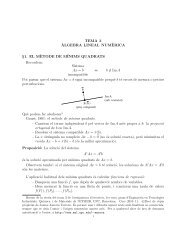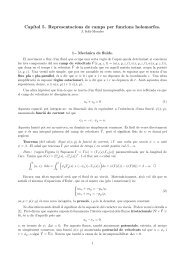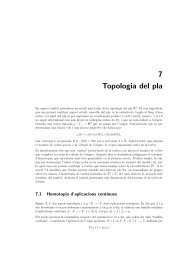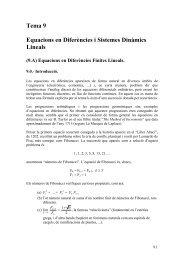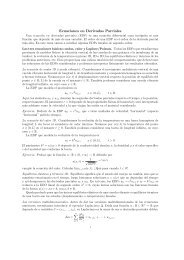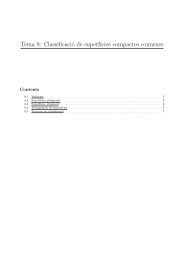Biomechanical Validation of Upper-body and Lower-body Joint - UPC
Biomechanical Validation of Upper-body and Lower-body Joint - UPC
Biomechanical Validation of Upper-body and Lower-body Joint - UPC
Create successful ePaper yourself
Turn your PDF publications into a flip-book with our unique Google optimized e-Paper software.
position data to joint position data, temporal <strong>and</strong><br />
spatial alignment <strong>of</strong> each pair <strong>of</strong> motions. After<br />
that, we have computed joint rotations which we<br />
want to evaluate.<br />
4.1 Data correspondence<br />
We converted the optical motion capture data<br />
to the representation <strong>of</strong> Kinect motion data in<br />
order to enable comparison between them. First<br />
<strong>of</strong> all we have aligned the same movement from<br />
both systems in terms <strong>of</strong> coordinate system.<br />
Optical motion data is reported in its world<br />
coordinates ((a) in Figure 6 ), <strong>and</strong> the same for<br />
Kinect data ((d) in Figure 6 ). Both coordinate<br />
systems have the same orientation but they have<br />
exchanged axes. We have corrected it as shown<br />
(b) in Figure 6.<br />
Figure 6: Steps from data correspondence. (a)<br />
Markers from optical motion capture.<br />
(b) Rotated markers from optical motion<br />
capture. (c) <strong>Joint</strong> positions from<br />
optical markers. (d) <strong>Joint</strong> positions<br />
from Kinect motion capture.<br />
<strong>Joint</strong> correspondence consists in compute<br />
joint positions from optical motion data <strong>of</strong> the<br />
markers. As we have explained before, we have<br />
used an specific markers placement to solve<br />
this. Each joint position that Kinect is able to<br />
track is estimated from two optical markers. To<br />
achieve this is very simple since you just have<br />
to calculate the midpoint between marker pairs.<br />
In (c) <strong>of</strong> Figure 6 it can be observed the result<br />
<strong>of</strong> this step. Now the appearence <strong>of</strong> optical data<br />
is like Kinect data.<br />
Capturing with two different systems produce<br />
some temporal differences according to<br />
technical equipment features. First, there is<br />
a difference between framerates used in both<br />
motion capture systems. In case <strong>of</strong> Kinect, a<br />
framerate <strong>of</strong> 30 frames per second is used. In<br />
the other h<strong>and</strong>, the optical motion capture that<br />
we used record at a speed <strong>of</strong> 120 frames per<br />
second. So, we have time scaled data acquired<br />
by optical system.<br />
Both motions have the same velocity but<br />
they are still unsynchronized. At this moment<br />
we have pairs <strong>of</strong> motions that their beginnings<br />
<strong>and</strong> endings are close between them, but not<br />
exactly at same time because synchronization<br />
was manually done. In order to fix it we<br />
have searched which is the point when the<br />
actor leaves t-pose <strong>and</strong> starts performing the<br />
appropiate movement. We have observed in<br />
video recordings that actor tends to lower the<br />
arms just after staying in t-pose. So, we have<br />
detected this decreasement in vertical axis <strong>of</strong><br />
h<strong>and</strong>s position using a velocity threshold value.<br />
Definitely we have motion pairs expressed<br />
in the same way <strong>and</strong> synchronized. To evaluate<br />
if data processing is successful, we have<br />
implemented a visualization tool for qualitative<br />
revision. In Figure 7 there is a captured screen<br />
<strong>of</strong> that application.<br />
4.2 Rotational Data<br />
We have 3D positions <strong>of</strong> specified joints from<br />
both motion capture systems. Our goal is to<br />
compare joint rotations instead <strong>of</strong> positions. So,<br />
we have extracted the desired rotations from<br />
position data . To compute these rotations we<br />
can distinguish the calculation <strong>of</strong> knee rotation<br />
<strong>and</strong> the rest. Knee rotation is the angle between<br />
two vectors, one from knee to foot <strong>and</strong> the<br />
other from knee to hip. This is because knee



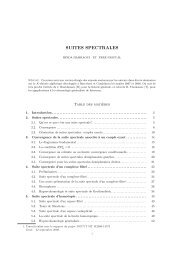
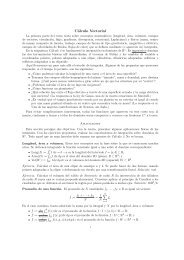
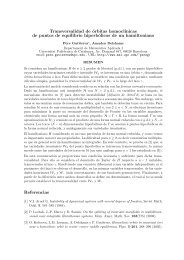
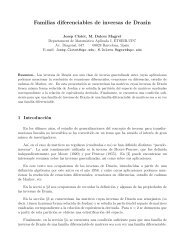
![INTEGRALES ELÍPTICAS COMPLETAS Dado un parámetro m ∈ [0,1]](https://img.yumpu.com/14067465/1/184x260/integrales-elipticas-completas-dado-un-parametro-m-01.jpg?quality=85)


